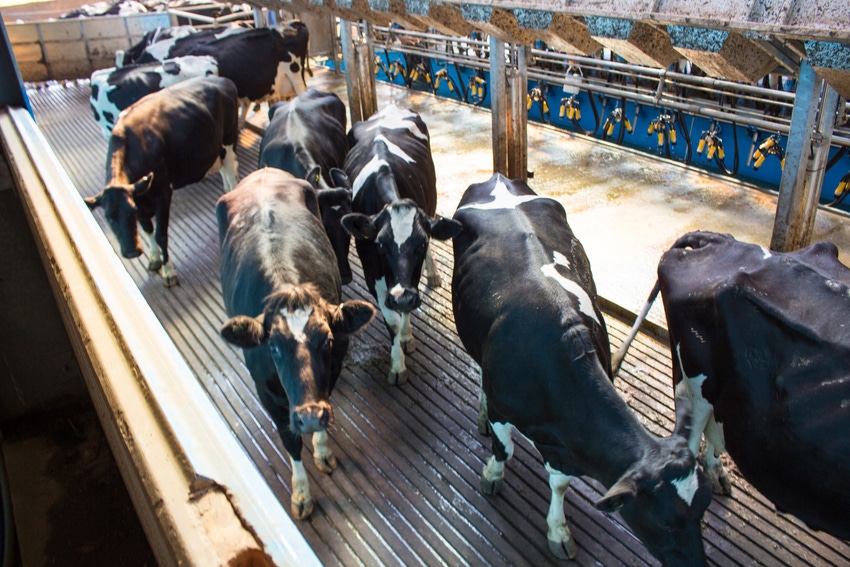Losses from heat stress can start when temperature-humidity index is above 68 for majority of a day.
May 31, 2019

High-performing dairy cows generate a lot of heat as they produce milk, and increasing summer temperatures can add to that metabolic heat and take a toll on cow performance, according to Lallemand Animal Nutrition.
“Modern dairy cows generate their own metabolic heat. Cows that are already hot will feel the effects of heat stress earlier, and — when cows are under heat stress — they tend to eat less, ruminate less and produce less milk,” said Tony Hall with Lallemand Animal Nutrition technical services-ruminant.
Cows have several responses to heat stress, including increased sweating and respiratory rates. A higher respiration rate can compromise the bicarbonate content of the saliva and even shift the acid-to-base chemistry of a cow’s blood, Hall noted, and this increase in nutrient requirements is one of the many reasons milk production is reduced during periods of heat stress.
Losses from heat stress can start when the temperature-humidity index (THI) is above 68 for a majority of the day. THI is a single value representing the combination of air temperature and humidity associated with the level of thermal stress. THI can be used to quantify the risk, and ultimately the production losses, associated with heat-stressed dairy cows, Hall said.
“It’s not always convenient to measure heat stress without disturbing the cows, and it’s impractical to take every cow’s temperature each day,” Hall said. “The easiest way is to tell if cows are under heat stress is to observe their respiration rate, which is closely related to the THI.”
Research shows once a cow’s respiration rate gets above 60 breaths per minute, the THI is above 68, Hall said.
Once heat stress is identified, steps can be taken at the farm level, he said. First, producers should make sure clean, fresh water is readily available and accessible. At least 3 in. of trough space per lactating cow is recommended.
Then, feed twice daily to help maximize intakes. Ideally more of the total mixed ration (TMR) should be offered at the coolest part of the day — around 8 p.m. to 8 a.m. Also ensure the forage component cannot be sorted out and perform regular push-ups to encourage access and feed intake, Hall suggested.
“We all know the right ration plays a big part in good productivity, but it’s even more important to pay careful attention during times of stress when cattle just feel like sitting in the shade,” he said. “A common problem I see is trying to incorporate unstable silage into the ration. It can cause the entire TMR to heat, and hot cows simply don’t want to eat hot feed in the summer.”
Always discard moldy silage and feed out at a rate fast enough to avoid heating. In addition, always select the most digestible forages and strive to maximize inclusion of neutral detergent fiber from forage within the appetite limit of each pen for lactating cows, Hall said. Check the particle size distribution profile using a Penn State Forage Particle Separator to confirm the distribution is within guidelines.
According to Hall, one simple change is adding an active dry yeast probiotic, which can improve rumen function and increase fiber digestion in lactating dairy cows. Probiotics are especially helpful for producers experiencing health challenges as a result of heat or other stressors, he said.
“When heat stress occurs, normal rumen digestion and function is disrupted. This worsens the already significant effects of heat stress in dairy cattle,” Hall said. “We can’t change the temperature or humidity, but we can help protect the productivity of our herds.”
Source: Lallemand Animal Nutrition, which is solely responsible for the information provided and is wholly owned by the source. Informa Business Media and all its subsidiaries are not responsible for any of the content contained in this information asset.
You May Also Like


.png?width=300&auto=webp&quality=80&disable=upscale)
